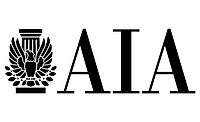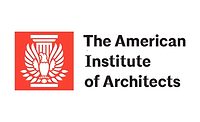Architects Advocate for Safer Schools and Energy Efficiency

Washington, D.C. -- The American Institute of Architects (AIA) and more than 600 hundred of its architect members recently advocated for public policies that will make schools safer and improve energy efficiency in buildings.
“By unifying more than 600 architects from across the country on Capitol Hill, we are sending a clear message to members of Congress that we are engaged, and we are committed to positive change,” said William Bates, 2019 AIA president. “We need lawmakers to hear firsthand how architects are creative problem solvers who see the big picture and bring the innovative instinct and technical knowledge that is needed to address many of our most challenging issues.”
The efforts were part of the AIA’s biennial Capitol Hill Day, which included meetings with 137 members of Congress and 337 Congressional staff. Overall, these meetings covered 50 states, including 358 house districts and 98 senate offices.
During meetings, Congressional members heard from architects how design plays a key role in making new and existing schools safer. Following Sept. 11, 2001, the design of buildings—including airports, sports centers and office buildings—became a central focus to the U.S. government’s terrorism mitigation strategy. However, the response has not been the same for schools. AIA and its members urged Congress to make design services eligible for existing federal grants to begin addressing a lack of funding at the state and local level for a systematic approach to redesigning schools.
Additionally, architects discussed the need to establish a federal clearinghouse of design resources that school officials can access to increase safety and security.
A second key policy architects discussed with lawmakers aims to increase energy efficiency in America’s existing building stock. Buildings are among the largest contributors to carbon emissions. AIA is urging Congress to create a new tax incentive to increase energy efficiency in all buildings. This new policy is needed to complement the Energy Efficient Commercial Building Tax Deduction or “Section 179D,” which has been successful in encouraging the use of energy efficient technologies—but mainly in new construction.
“I am confident with today’s strong presence, together, we will achieve not just our immediate goals, but forge lasting alliances that will help advance our shared vision to drive positive change through the power of design,” said Robert Ivy, AIA executive vice president and CEO.
For more information, visit www.aia.org.
Looking for a reprint of this article?
From high-res PDFs to custom plaques, order your copy today!









